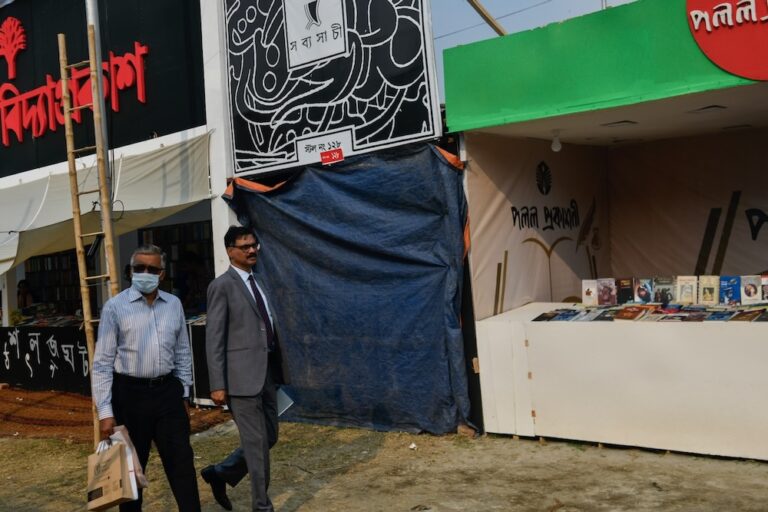Authorities have reportedly prepared a list of 4,000 Rohingya refugees who are set to be relocated to Bhasan Char island. Human Rights Watch called for a transparent relocation process and said the transfers need independent assessment and refugees’ informed consent.
This statement was originally published on hrw.org on 3 December 2020.
The Bangladesh government should immediately halt imminent relocations of Rohingya refugees to remote Bhasan Char island, Human Rights Watch said today. The authorities have reportedly prepared a list of 4,000 Rohingya refugees to be relocated, beginning with transfers to the port city of Chattogram on December 3, 2020.
The Bangladesh government should commit to a transparent relocation process, fully informed consent of transferred refugees and freedom of movement on and off the island, and heed the United Nations’ call for a prior independent technical and protection assessment.
“The Bangladesh government is actively reneging on its promise to the UN not to relocate any refugees to Bhasan Char island until humanitarian experts give a green light,” said Brad Adams, Asia director. “If the government were genuinely confident in the habitability of the island, they would be transparent and not hastily circumvent UN technical assessments.”
In a statement on December 2, the United Nations said that it had not been involved in preparation for this transfer to Bhasan Char and that “any relocations to Bhasan Char should be preceded by comprehensive technical protection assessments,” reiterating that the UN stood ready to proceed with such assessments “if permitted by the Government.” European Union Ambassador Rensje Teerink said that the EU would not comment on relocation to Bhasan Char until the UN had been allowed to complete technical and humanitarian missions to the island. The UN also said that the government should respect commitments to ensure any relocation is voluntary.
Though the government claims that any relocation will be voluntary, Human Rights Watch recently spoke with 12 families who said their names were on the list, but that they had not willingly volunteered to relocate. Some refugees on the list have fled out of fear of forced relocation.
“I have no idea how my name appeared there, but I never voluntarily put my name on that list,” one refugee said. “I only learned I was on the list after the Camp-in-Charge [camp authority or CiC] called me to his office and told me. After that, I fled from my shelter. I am hearing now that the CiC volunteers and majhis (community leaders) are looking for me and my family. I am afraid that if they find me, they will force me to go.”
Another refugee said, “My name appeared on the list so now the CiC has threatened me, saying that since my name is there, I must go. He said, even if I die, they will take my body there [to Bhasan Char]. I don’t want to go to that island.”
The government has provided limited information to refugees about the actual conditions on the island, and there are some allegations that the authorities may have offered misleading information and incentives to move there. One refugee told Human Rights Watch that he put his name on the list because camp leaders told him that those on the list would be given priority to repatriate to Myanmar, and would be given 5,000 taka (US$59). But he has changed his mind about wanting to relocate since he heard about those currently detained on the island, and that they are being held in “prison-like facilities” and don’t have freedom of movement.
Some refugees said that they willingly volunteered to go to Bhasan Char because they were told by the majhis and CiC volunteers that they would be able to choose livelihood opportunities, such as fishing or farming, that they would have better access to health facilities, and that their children would get education.
However, the conditions on the island for the over 300 Rohingya refugees currently held there are poor, Human Rights Watch said. Those on the island say they are denied freedom of movement and have no access to sustainable livelihoods or education. Refugees on the island said Bangladesh authorities beat them when they went on hunger strike, pleading to be allowed to leave the island and return to the camps in Cox’s Bazar.
Healthcare workers in Cox’s Bazar and refugees who previously visited the island expressed serious concerns about the lack of adequate medical care on the island. One refugee who visited the island during a “go and see” visit in September said “if anyone becomes critically ill, the closest option is a hospital that is a minimum three-hour journey by boat,” which would be potentially impossible during monsoon season. He said some refugees on the island told him that a few days before the visit, one of the refugees had fallen unconscious, and the authorities had transported him by naval helicopter to Chattogram for medical care.
That incident indicates that the island likely does not have adequate healthcare facilities and that there is no sustainable plan in place for responding to medical emergencies, particularly if thousands of refugees are moved to the island, Human Rights Watch said. Some of the refugees who visited Bhasan Char also said that women and girls on the island do not have access to proper sanitary supplies to maintain safe menstrual hygiene.
“Donor governments engaged in the Rohingya crisis response such as the US, UK, Japan, Australia, and Canada should take a clear stand against this rash move to relocate Rohingya to Bhasan Char,” Adams said. “Decisions to move after the completion of technical assessments need to be voluntary and fully informed.”



